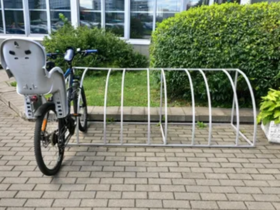The most common breakdown of the stretch ceiling. Undoubtedly, a stretch ceiling is one of the best design solutions for the interior of your apartment. However, unfortunately, it is subject to various damage. We will talk about the most common of them, and we will tell you how to fix everything with your own hands. So, the most commonly there are damage:-cut or sag-sagging after flooding-installation defects how to repair the tensioned blade with your own hands does not have to call specialists every time you notice any breakdowns on your stretch ceiling. You will correct many of them without much difficulties yourself, saving your money. So, we repair ourselves: cut or puncture. Regardless of whether you installed a fabric ceiling, or you have a stretch ceiling made of PVC film, and one and the other are very susceptible to cuts or punctures. This is especially true for the first days after its installation. Even the sharp corner of the cabinet that you decided to move, or the cornice, which you accidentally touched the canvas, can damage the stretch ceiling. If your ceiling is fabric, the cut is simply sewn up with nylon threads selected in the tone of the ceiling. If the cut is large enough, then tightly press the edges of the canvas and stuck it with a strip of special glass of wallpaper or fabric tape. If you have done these procedures and the patch is very noticeable, you can paint over the entire surface from the spray gun, using a special, water -based paint for this. If the film is cut, first of all, it is necessary to immediately seal the cut with tape, this is not allowing the further rupture of the film while you prepare everything you need for repair. And you need the following: a film for a patch, glue-mix, dry fabric. After the installation of the mounted ceiling is completed, the masters, as a rule, leave the remains of the film — cut out the patch of the required size from it. If you don’t have films, buy it in a specialized store. If you fail to choose the necessary shade, you can use a patch of a contrasting color and create a bright designer accent on the ceiling. When the patch is prepared, tape is removed from the cut, a patch with glue or sealant applied to it is carefully assigned to its place. Carefully press the patch to the stretch ceiling and immediately remove the remaining glue with a dry cloth. There is another possible option for repairing the cut of the film, but it is suitable only if the cut is in the immediate vicinity of the wall. Then you can tighten the canvas by hiding the cut under the baguette. In this case, you will need an antenna cable, a regular hair dryer, quality glue. The procedure for actions is as follows: to the edge of the cut, glue a piece of the antenna cable of the required length well. Dry the sealing place with a hairdryer. Когда клей окончательно высохнет, аккуратно заправляете пленку с приклеенным кабелем под багет. It is completely natural that after such a procedure, the film in other places on the ceiling will wrinkle. This should not scare you. You should repeat the procedure already familiar to you again — glue the antenna cable in places of wrinkling and also season it under the baguette. For “laying” the antenna cable under the baguette, a flat and dumb object is used to avoid additional damage to the film. Another option for the fight against punctures and cuts is the installation at the site of damage to the lamp or chandelier. In this case, you cut out the hole you need and glue a special plastic ring into which the lamp is subsequently inserted, or another decorative element. Sliding after flooding. Unfortunately, flooding by neighbors from above is a fairly common situation. Sometimes this is a consequence of the breakdowns of plumbing, sometimes just an inattention of people living on top. Actually, the reason is not so important, but its investigation will turn into a repair for you or the complete replacement of the stretch ceiling. The last procedure will have to be carried out if the water that fell on the canvas of the stretch ceiling was hot. The reason for the need to replace is simple — when exposed to hot water mass, the PVC film is stretched irreversibly. But if the water was not hot, or a little of it, you have the opportunity to cope with sagging yourself. The first and easiest way applies to those who had chandeliers or lamps in the stretch ceiling. You, after turning off the electricity, remove the chandelier or lamp of the lamp, remove the decorative ring and simply drain the water accumulated on the stretch ceiling area. Pay attention to the fact that it is possible to mount the lamps back only after the entire surface is completely dry. If you do not have mounted lamps, then you will have to disconnect part of the canvas from the frame of the structure. When doing it carefully, you can do without the help of specialists. Experienced craftsmen will have to call already if there were a lot of water, and she simply pulled out a stretch ceiling from the frame. In this case, on your own, you most likely can’t cope. Installation defects. In principle, if defects in the installation of a stretch ceiling were found, you can contact the company that provided you with the requirements of warranty repair. If you do not want to spend either your time or nerves, waiting for masters, minor defects can be eliminated with your own hands. This applies primarily to ruptures of the canvas near the seams, which can be fighted with the help of glue and antenna cable. With stronger defects, such as the separation of the canvas along with fasteners, the intervention of professionals is necessary. DIY drywall replacement. In case of violation of the technological processes of installation, flooding on the top, shrinkage of a building or permanent vibrations may need a partial or full repair of a drywall ceiling. With your own hands. In order to better imagine all the stages that you need to do in order to repair the damaged surface of the stretch ceiling, you are offered phased photos of the repair work. Now consider the most common options: 1. Crack on drywall. To eliminate this problem, it is necessary to put the cracked place with a chisel. In this case, the old putty and all elements of drywall are removed, which are poorly held. Then sandpaper is used, with its help the paint is completely removed, and this must be done at a distance of a few centimeters from the edge of the crack. Using a rag, clean the surface of dust and proceed to the location. First of all, we primer the surface. For this, a special primer for drywall is presented in building materials stores. Only after completely drying the primer is applied to the surface. Again, we still wait for its complete drying and paint the ceiling. 2. If a large crack has formed in the ceiling, you must make a patch using a part carved from the same drywall. It is pushed into the holes and fixed with screws. Such fasteners will firmly strengthen the patch and will not allow it to fail. After screwing, the surface is put down and painted. 3. Silence of drywall. If drywall sags slightly, you can correct this defect by applying a thick layer of plaster. You can also remove the sagging sheet and install it again on the bar attached to the ceiling, thereby strengthening the existing structure. If the sagging is strong, it is necessary to carry out full dismantling and after amplifying and pulling up the frame re -mount new sheets of drywall. 4. Replacement of drywall sheets. This procedure completely repeats the installation procedure of drywall sheets, with the difference that not all sheets are replaced here, but only their parts. Due to the foregoing, it is assumed that the basis-frame for drywall we already have. We proceed to the installation. Remove the chamfer from drywall, do not forget that before installing it should lie in this room for several days to “get used to” to the temperature. The edge must be trimmed with a knife at an angle — this will subsequently facilitate putty. Fasten the drywall sheets start from the corner of the room. The optimal step of self -tapping screws 20 cm. From the edge you should retreat by 10-15 mm. When you screw the screws on the next sheet, do it “differently” so that they do not be opposite each other. The hats of self -tapping screws should enter drywall well. Make sure that they do not appear above its surface in any case. Neighboring drywall sheets should also not be at the same level with each other. To do this, they are a little aside aside. Usually for one cell. Also, sheets of drywall should not be installed close to each other. Between them it is necessary to leave about two millimeter distance. A drywall sheet should be well fixed around the entire perimeter and center.
Particular attention should be paid to the processing of external angles, if any in the room. You should not allow the junction of drywall in such places. The indent should be at least 10 cm from the corner, otherwise, cracks on drywall are formed soon. If the repair requires the entire ceiling, we change all the sheets of drywall. In cases where only part of the ceiling coating is damaged — we replace only deformed sheets.
After the drywall sheets are laid and fastened, we proceed to the putty of the surface. To do this, pre -process all seams with a primer and wait for its complete drying. Putty must be used high -quality, as it is later reduced as much as possible to the appearance of cracks on the ceiling. To start putty work, putty should be diluted, accurately adhering to the instructions on the package. First of all, all near the wall seams are spaced, then the joints and hats of self -tapping screws are put off. To close the factory seams, first we completely fill the seam with putty, and then align with a wide spatula. After the putty dries, a self -adhesive tape is glued to the seams, where the seams are crossed, the tape is overlapped. Next, put a drywall again. After the second ball of putty dries, the surface is ready for staining.
Many users will agree that it is much better to see once by themselves how it is repaired or mounted by drywall slabs than several times to read. Therefore, in addition to all of the above, we offer you a video that shows the installation of drywall. Having carefully read the above information, you can carry out the current repair of your hinged ceiling or drywall with your own hands without resorting to the help of qualified specialists.












Оставить коммент.